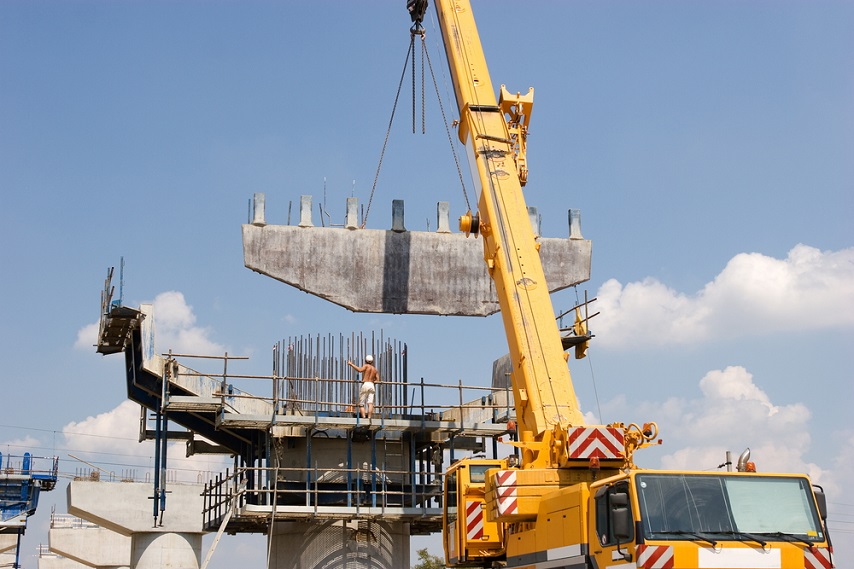When your construction project requires a crane to lift, haul, or transport heavy materials, it pays to have the right crane on site. Having the right crane on site increases project efficiency, reduces costs, and prevents delays associated with selecting the wrong crane type.
However, this is easier said than done. There are numerous crane types and each is designed with a specific purpose in mind.
The near limitless crane options available to hire or buy include the following:
- Tower crane
- Self-erecting tower crane
- Vehicle loading crane
- Non-slewing mobile crane
- Slewing mobile crane
- Bridge and gantry crane
- Derrick crane
- Portal boom crane
This non-exhaustive list highlights how extensive the general crane selection guide is. If you need to hire a crane for your construction project, you want to be sure it’s the right one for the job on hand.
5 Tips for Choosing the Right Crane for Your Project
Below, we look at the considerations you need to make to select the right crane to finish your project safely and efficiently.
#1. Project duration
Determining the right crane for your construction project starts with understanding the project’s scope. The duration of your project will decide what type of crane your company should hire.
A construction job that comes with frequent to infrequent operations will find little use for a tower crane.
Tower cranes also aren’t suited for construction work that is short in duration. They require a static base-type foundation that has a long installation period, limiting their use for short-term projects.
In instances such as the example project above, a mobile crane has a better working application. Its flexible design enables it to become operational within a day, providing liquidity to site operations.
#2. Operational conditions
Terrain, weather conditions, and spatial constraints are critical considerations that will have a bearing on the type of crane your project needs. A basic understanding of site-specific conditions will inform what crane you’ll need.
Certain crane types are better equipped for specific operational conditions. Rough terrain cranes, for example, are optimally suited for off-road construction when compared to a more static crane type like a tower crane.
Likewise, if your construction site faces significant spatial constraints, such as those found in tight, urban areas, a mobile crane, with its small footprint, will manage the job with operational efficiency.

#3. Maximum load and height
From a safety standpoint, this is where you want to start. Before looking into any other factor, consider the maximum height and load requirements for your project.
Hiring a crane that fails to meet the maximum load and height for your project’s needs is irresponsible.
Structural failure puts employees, as well as those in the surrounding vicinity, at serious risk. Subjecting anyone to unsafe working conditions increases liabilities and damages a company’s reputation.
If you’re erecting a large commercial building, few crane types can match the height capacity of a tower crane. Small to medium construction projects, such as a residential construction, can be managed with a smaller crane type like an articulating crane.
While you determine maximum load and height, consider the maximum working radius of your crane. Ideally, you want a crane type that will meet load and height capacities while providing effective coverage throughout most areas of your site.
#4. Operator’s skill level
Cranes are specialized heavy machinery. This means that only those with specific certifications can safely operate a crane. These certifications provide proof that an operator has met the requirements necessary to operate a crane in an effective and safe manner.
But just like crane types, crane operator certifications run the gamut. Each crane type requires a specific certification to operate.
When choosing a crane for your construction project, consider the skill level and qualifications of your operators.
If their qualifications do not match your selected crane, it is your responsibility to either provide opportunities for more crane operator training or supply operators with the right training.
#5. Existing hazards and obstacles
Existing hazards and obstructions on your job site must be factored in when choosing a crane type. Power lines, nearby buildings, and trees are examples of obstacles that your selected crane must circumvent.
If you are working with a crane hire company to employ a crane on site, inform them of existing hazards as they can advise the right crane for your project.
The right crane for the right job
While certain crane types will overlap depending on your project’s requirements, it’s important to understand that each crane is modeled to serve a specific purpose.
Having the right crane on site can spell the difference between a safe and successful job and one that is plagued with delays and costly mistakes.
About the Author: Hermann Buchberger is the Founder and CEO of Active Crane Hire (ACH). He’s taken the company from start-up to Industry Leader offering the largest fleet of construction cranes in Australia. ACH launched a new type of crane previously unheard of in the Australian market: electric tower cranes. The company’s infrastructure and associated services now comprise a fleet of trucks and trailers, a crane-rigging team, mobile crane technicians, a fleet of service vehicles, and an extensive range of crane spare parts.

